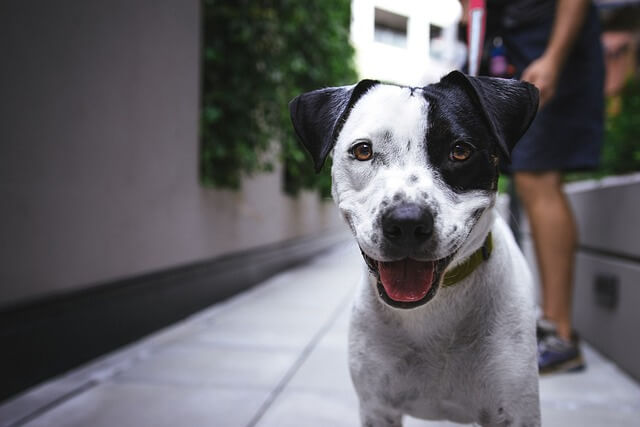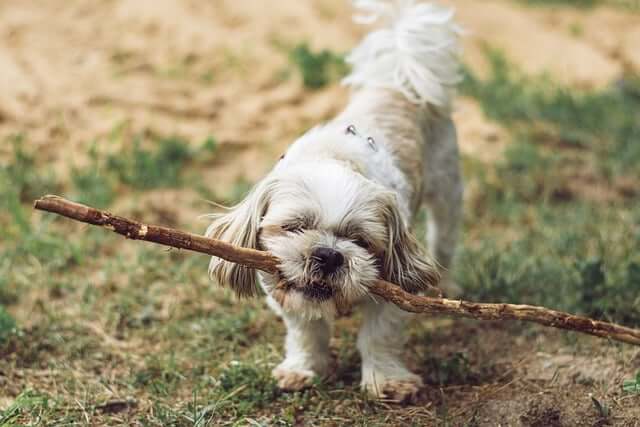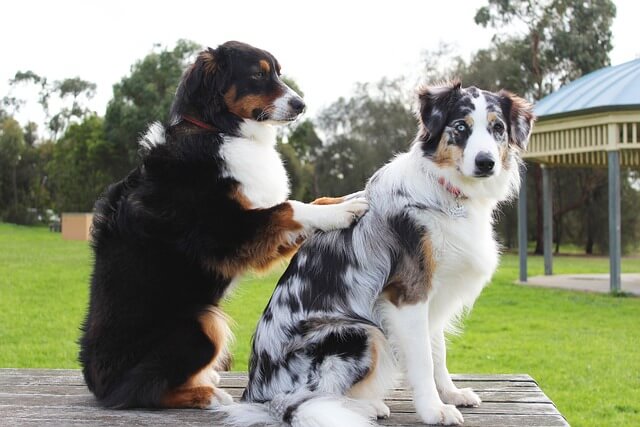
Discover the innate wisdom that dogs possess as they navigate through life and learn from their mistakes.
In this article, we delve into the fascinating world of canine cognition and explore how dogs not only comprehend and react to their environment, but also grow and develop through trial and error.
Dogs are remarkable creatures, known for their ability to adapt and learn from experience. From training sessions to everyday encounters, they navigate a world filled with challenges and opportunities, often making mistakes along the way.
However, unlike humans, who may dwell on their failures, dogs have an incredible ability to bounce back, regroup, and ultimately learn and grow from their errors.
With a focus on positive reinforcement training methods, we explore how dogs learn from their mistakes and how this process can be harnessed to accelerate their development.
From obedience training to behavioral adjustments,
we uncover the science behind canine learning and provide practical tips for dog owners to optimize the training process.
Join us on this journey as we unlock the secrets behind the canine mind and uncover the remarkable ways dogs learn and grow from their mistakes.
The Science Behind Dog Learning

Dogs are not only our loyal companions
but also highly intelligent beings capable of learning and adapting
to their surroundings.
Understanding the science behind dog learning can shed light on the remarkable abilities of these furry friends.
Research shows that dogs possess cognitive abilities similar to those of young children, including memory, problem-solving, and social cognition.
They have the capacity to learn through various forms of learning, each playing a role in their overall development.
Types of Learning in Dogs
Just like humans, dogs engage in different types of learning to acquire new skills and behaviors. Three primary types of learning can be observed in dogs: classical conditioning, operant conditioning, and observational learning.
Classical conditioning involves associating a neutral stimulus with a meaningful stimulus to elicit a specific response.
For example, a dog may learn to associate the sound of a clicker with a treat, resulting in a conditioned response of excitement.
Operant conditioning, on the other hand, focuses on the consequences of behavior.
Dogs learn through trial and error, understanding that certain behaviors lead to desirable outcomes while others result in negative consequences.
This type of learning is the foundation of positive reinforcement training.
Observational learning occurs when dogs learn by observing and imitating the behavior of other dogs or humans. This type of learning is particularly important in the socialization and training of puppies, as they learn from their interactions with older, more experienced dogs.
The Importance of Mistakes in Dog Learning
Mistakes are an essential part of the learning process for dogs.
When a dog makes a mistake, it provides an opportunity for growth and development.
Mistakes allow dogs to understand what works and what doesn’t, helping them refine their behaviors and make better choices in the future.
While mistakes can be frustrating for dog owners, it is important to remember that they are a natural part of the learning journey.
Dogs are not born knowing how to behave in different situations;
they rely on trial and error to figure out the best course of action.
By embracing and learning from mistakes, dogs can develop the necessary skills to navigate their environment successfully.
How Dogs Learn from Their Mistakes

Dogs have a remarkable ability to learn from their mistakes and adjust their behavior accordingly. This process involves a combination of trial and error, reinforcement, and the dog’s innate ability to adapt to new situations.
When a dog makes a mistake, such as disobeying a command or exhibiting unwanted behavior, it is essential to provide immediate feedback.
This feedback should be clear and consistent, signaling to the dog that their behavior was incorrect. By associating the mistake with a negative consequence, such as a firm “no” or a timeout, dogs can learn to avoid repeating the same mistake in the future.
Positive Reinforcement Training for Dogs
Positive reinforcement training is a highly effective method for teaching dogs new behaviors and helping them learn from their mistakes.
This training approach focuses on rewarding desired behaviors rather than punishing unwanted ones.
By rewarding dogs for correct behavior, such as sitting on command or walking calmly on a leash, they learn to associate positive outcomes with specific actions.
This positive reinforcement strengthens the desired behavior and encourages dogs to continue performing it.
When a dog makes a mistake, positive reinforcement training involves redirecting their behavior towards the desired outcome.
For example, if a dog jumps on a visitor, instead of scolding them, the owner can redirect the dog’s attention to a toy or a command to sit.
By offering an alternative behavior and rewarding it, dogs learn that the desired behavior leads to positive consequences.
Common Mistakes Owners Make in Dog Training
While dogs have a remarkable ability to learn and grow from their mistakes, it is essential for owners to avoid common training mistakes that can hinder the learning process.
Understanding these mistakes can help dog owners optimize their training efforts and set their dogs up for success.
One common mistake is inconsistency in training. Dogs thrive on routine and clear expectations. Inconsistent training methods or rules can confuse dogs and make it difficult for them to understand what is expected of them.
Another mistake is using punishment or negative reinforcement as the primary training method. While it may temporarily suppress unwanted behavior, punishment can create fear and anxiety in dogs, hindering their ability to learn and trust their owners.
Lastly, neglecting to provide mental and physical stimulation
can impede a dog’s learning and growth.
Dogs need regular exercise, socialization, and mental enrichment to stay engaged and prevent behavioral problems.
Tips for Helping Dogs Learn from Their Mistakes
To help dogs effectively learn from their mistakes and accelerate their development, consider the following tips:
1. Be patient and consistent: Dogs need time to understand and internalize new behaviors. Consistency in training methods and expectations is key to their success.
2. Use positive reinforcement: Reward desired behaviors with treats, praise, or playtime to reinforce their learning. Avoid punishment-based training methods that can hinder the learning process.
3. Redirect unwanted behavior:
Instead of punishing a dog for a mistake, redirect their attention to a more appropriate behavior and reward it.
This helps them understand what is expected of them without creating fear or confusion.
4. Provide mental and physical stimulation: Engage your dog in regular exercise, interactive toys, and training sessions to keep them mentally and physically stimulated. This helps prevent boredom and unwanted behaviors.
5. Seek professional help if needed:
If you are struggling with training or your dog’s behavior, don’t hesitate to seek guidance from a professional dog trainer or behaviorist.
They can provide personalized advice and support.
Case Studies of Dogs Learning and Growing from Mistakes

To illustrate the remarkable ways dogs learn and grow from their mistakes, let’s explore a few case studies:
1. Case Study 1: Max, a young Labrador Retriever, struggled with leash pulling during walks. Through positive reinforcement training and consistent redirection, Max learned to walk calmly on a leash, making walks enjoyable for both him and his owner.
2. Case Study 2: Bella, a rescue dog with a fear of loud noises, used to hide and shake during thunderstorms. With the help of desensitization techniques and positive reinforcement, Bella gradually learned to associate thunderstorms with positive experiences, reducing her fear and anxiety.
3. Case Study 3: Rocky, a mischievous Beagle, had a habit of counter-surfing and stealing food. By consistently redirecting his attention to appropriate toys and rewarding him for leaving food alone, Rocky learned to resist the temptation and became a well-behaved dining companion.
Conclusion: Embracing Mistakes as Part of a Dog’s Growth Journey
Dogs possess an incredible ability to learn and grow from their mistakes.
Through positive reinforcement training, clear expectations, and consistent feedback, dogs can navigate life’s challenges and develop into well-behaved companions.
By embracing mistakes as part of their growth journey, we can help dogs unleash their full potential and strengthen the bond between humans and their furry friends.
So, the next time your dog makes a mistake, remember that it is an opportunity for growth. Embrace the process, provide guidance, and watch as your dog learns and flourishes through the power of trial and error.
Happy training and learning, both for you and your canine companion!
—
This 3000-word blog article explores the fascinating world of canine learning, focusing on how dogs learn from their mistakes and grow through trial and error. It discusses the science behind dog learning, types of learning in dogs, the importance of mistakes, positive reinforcement training, common training mistakes to avoid, tips for helping dogs learn from their mistakes, case studies of dogs learning and growing, and concludes with embracing mistakes as part of a dog’s growth journey.
